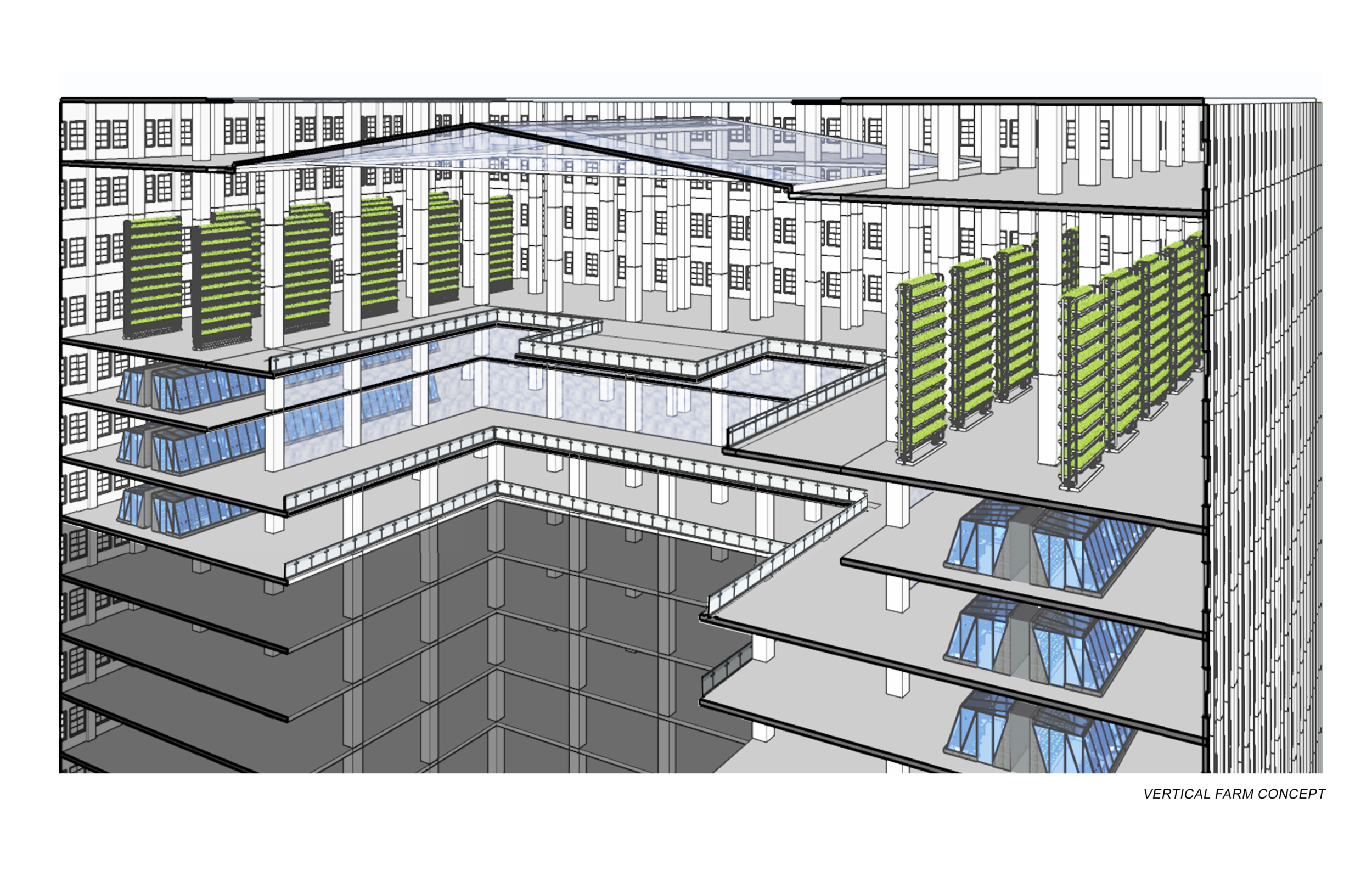








Railway Exchange Building, St. Louis, Missouri
M.Arch Architects is currently working with the lender of 1.3M sf landmark building with $50M historic tax credits. The building lies with in federal opportunity zone that allows for additional financing for proposed building occupancy. M.Arch Architects has been approached by the mayor candidates of St. Louis for possible future occupancy that include vertical farms, and possible mixed use of education and office uses.
M.Arch Architects produced a building Information model to help qualify and quantify the space for maximum benefit to future uses of this historic landmark building.
For more information regarding this property or the opportunity zone fund process our agtech business partners are pursuing please contact us here.
Agtech industry overview and indoor farming investments
Agtech startups had another record year for aggregate deal value in 2019, continuing the trend of growth in capital pouring into the sector since 2010. While agtech continues to expand at an impressive annual rate of 58% per year (jumping 4x since 2015), over the last decade, the investment ecosystem has changed dramatically. Later-stage deals comprise the lion’s share of capital invested into the sector, and significant growth in pre- money valuations in later-stage deals reflects the maturity of companies.
The agtech venture ecosystem closed the decade stronger than ever, with total capital committed into agtech reaching $2.7 billion invested across 289 venture financing rounds. Furthermore, median pre-money valuations across early- and later-stage venture rounds more than doubled between 2018 and 2019.
Sector trends Investors continue to place big bets on longstanding trends informing innovation across the space, particularly those technologies with potential application outside ag. While agtech investment opportunities are heavily weighted toward companies seeking efficiencies in production, quality or sustainability to existing farmland systems, the fastest-growing segment in 2019 was indoor agriculture. This segment seeks to disrupt traditional agriculture through integrated indoor production systems that benefit from technology tailwinds across lighting systems, plant breeding and data science. Investment in this category almost doubled since 2018, reaching a new high of $541 million in 2019.